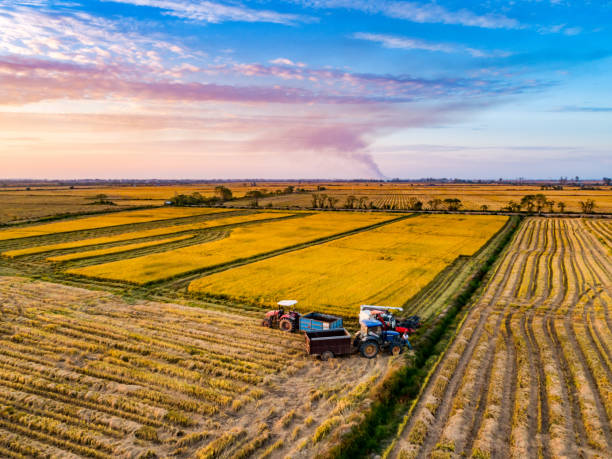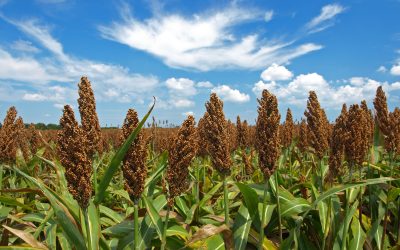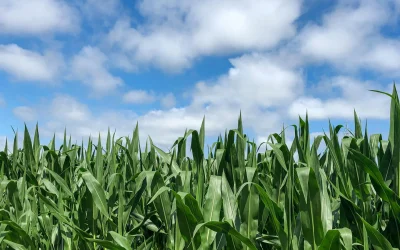Global agriculture is at a pivotal moment in its history. The Food and Agriculture Organization of the United Nations (FAO) estimates that food production needs to increase by approximately 70% by 2050 to meet global calorie consumption. Farmers aren’t only responsible for producing enough food to feed nearly 10 billion people by 2050; they also face unprecedented challenges that threaten their production capabilities.
Water Conservation in Agriculture: A Growing Priority for Farmers
Rising global temperatures, emerging and evolving pests, limited arable land, inefficient logistics networks, insufficient labor resources and water scarcity are just a few obstacles farmers must overcome to meet global food production demands.
Of these, water scarcity is one of the most immediate risks. Will there be enough water to produce a profitable crop? How long will water be plentiful? What production changes may be required to conserve water resources? These are questions on farmers’ minds as they navigate a strategy for producing food when high-quality water for agriculture is dwindling.
Is There Enough Water to Meet Future Food Production Demands?
The World Wildlife Fund estimates that two-thirds of the planet’s population will face water shortages by 2025. In agriculturally productive areas, there may be enough freshwater resources to meet demands by 2050 with new technology and research investment. Still, significant water availability discrepancies are likely between and within countries.
The World Economic Forum estimates that 528 to 1,320 gallons (2,000 to 5,000 liters) of water are required to produce one person’s daily food. As incomes rise in the developing world, the population demands more complex food that is water-intensive to grow, putting even more strain on resources. With agriculture accounting for an average of 70% of all freshwater withdrawals globally, it is clear that the industry has a vested interest in finding sustainable solutions to water scarcity issues.
How Is Water Scarcity Affecting Agriculture?
What does the future of agricultural production look like if the global water crisis continues? One word: uncertain. We’re just beginning to see how rising temperatures and limited water could change global agricultural production.
In California, one of the world’s most agriculturally diverse and productive regions, as much as 691,000 acres were taken out of production in 2022 due to lingering drought conditions and reduced water availability. To put that into perspective, for every acre left unplanted due to a lack of irrigation water, the equivalent of 50,000 salads will be unavailable. If the trend continues over the next 30 years, water supply cuts could lead to the permanent loss of 1 million acres of productive farmland in California.
California isn’t the only region dealing with water issues. Drought and record heat have decimated Texas cotton crops in recent years. Growing conditions were so dire that cotton farmers abandoned an estimated two out of every three acres planted in 2022. Farmers in the Texas Panhandle, who typically have had access to irrigation water and the Ogallala Aquifer, are forced to cut back on water consumption and consider changes to their crop production on their farms. Twenty years ago, the Texas Panhandle was dominated by corn. But, because cotton takes much less water to grow than corn, many farmers in the Panhandle have switched to cotton to conserve water. These production shifts will likely continue as farmers are forced to make difficult decisions to remain profitable.
Even with modern fertilizers, improved seed traits and intensive production methods, crops will be yield-limited without water. Fortunately, water conservation is becoming a top priority in the agricultural industry as farmers, food companies and consumers demand more sustainable food production.
How Can Irrigation Technology Help Farmers Conserve Water?
Twenty percent of the total cultivated land is irrigated, and 40% of global food production comes from irrigated crops. That’s because irrigated agriculture is, on average, at least twice as productive per unit of land as rainfed agriculture, which supports more intensive production and crop diversification. However, it has been reported that 40% of global irrigation practices are unsustainable because they deplete environmental flows and/or groundwater supplies.
Innovative companies are introducing “smart” irrigation and novel water-enhancing technologies to address the inefficiencies of current irrigation practices. These technological advancements are complementary and can help growers increase water use efficiency — that means farmers get more crop yield per volume of water consumed by plants.
Smart Irrigation
Smart irrigation technologies feature sensitive sensors that monitor real-time soil moisture to help guide more precise water applications. Smart irrigation technology can use soil and local weather data to create water schedules tailored to any specific landscape. More sophisticated variable-rate irrigation systems allow farmers to adjust the water rate during individual irrigation events or to apply different rates across different productivity zones.
There are numerous benefits to smart irrigation technology – farmers optimize plant health and quality by providing plants with precisely the amount of water they need, and they reduce watering costs by applying only what’s necessary.
Water Enhancing Technology
UpTerra is leading the agriculture industry with its revolutionary new water-enhancing technologies. Using vortexing and frequency imprinting, UpTerra’s TerraFlow® device brings water to its optimum state — fully optimized and available — so plants and soil thrive.
TerraFlow uses vortexing and frequency imprinting technology to organize and enhance normal irrigation water. Water treated with TerraFlow’s technology has a lower surface tension, which expands its distribution across the soil’s surface and into the soil’s profile. The result is improved crop hydration and water retention, resulting in healthier soils and crops.
With TerraFlow, water works harder, helping farmers do more with less. Water and nutrients are more plant available at critical growth stages, and soil health is replenished over time.
TerraFlow’s high-volume capacity, ranging from 20 to 2,000 gallons per minute, is ideal for large-scale agriculture. It is compatible with most irrigation and cropping systems. Customers using TerraFlow have experienced significant agronomic and economic benefits compared to those using untreated irrigation water, including:
- Up to a 20% reduction in water usage while maintaining or increasing crop yields
- Significant improvements in soil water infiltration and holding capacity
- Higher revenue per acre
- Improved crop stress tolerance
What’s Next for Water?
It may seem like farmers face an insurmountable hurdle when it comes to accessing high-quality water to optimize future production needs. Fortunately, the technology available today provides deeper insights and a greater understanding than we’ve ever had before. While there’s never a silver-bullet solution to a complex problem like water scarcity, collaboration, open minds, big ideas and innovative execution pave the path towards progress.
UpTerra is committed to helping farmers produce more with less water – it’s the core of our business. We’re dedicated to investing in research and product development that supports farmers and global agriculture. Our team knows that the status quo isn’t good enough anymore. Farmers need solutions now. If you’re ready to join us on this journey, please get in touch.



